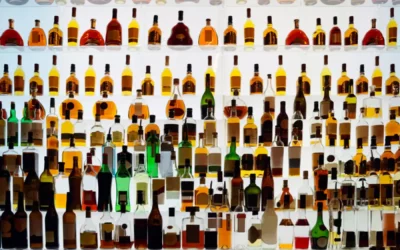That’s according to the results of a new study published Tuesday in JAMA. Alcohol and nicotine or tobacco may be some of the first, easier-to-get substances for teens. Because alcohol and nicotine or tobacco are legal for adults, these can seem safer to try even though they aren’t safe for teens. Teens who experiment with drugs and other substances put their health and safety at risk. The teen brain is particularly vulnerable to being rewired by substances that overload the reward circuits in the brain. Experimenting with drugs or alcohol is tempting for teenagers because they may not know or understand the dangers of using substances—even just once.
Tween and teen health

She became a poly-drug user, and ecstasy was just one of her drugs of abuse. Eventually, to maintain her high, she stole from her parents. Although she has been in a structured recovery program for over a year, she says she still misses using, especially because drugs gave her the feeling that everything in life was all right. Opioids include legal prescription medications such as hydrocodone, oxycontin, and fentanyl, as well as illegal drugs such as heroin. These drugs carry a high risk of overdose and death. The annual rate of opioid overdose deaths for those aged 15 to 24 years is 12.6 per 100,000 people.
Teen Drug and Alcohol Use Linked to Mental Health Distress – The New York Times
Teen Drug and Alcohol Use Linked to Mental Health Distress.
Posted: Mon, 29 Jan 2024 08:00:00 GMT [source]
Teenage Drug Addiction: An Overview

A common element of all the teens’ experience was that they did not contain their drug abuse to ecstasy alone. But however entrenched the teens became in drug use, each story makes clear that rehab can be effective in treating abuse of ecstasy and other drugs, and in getting a young person back on track with school. Michelle got her start with drugs with marijuana, at the age of 14. She shares that she soon graduated to ecstasy then acid. For Michelle, the start of high- school triggered the drug abuse, as well as influence from her boyfriend. Although she entered high school as a cheerleader, by sophomore year she was a near dropout.
Living Recovery: True Stories of Addiction Recovery
- Eventually, she entered rehab as an alternative to facing criminal sanctions.
- I didn’t want to be there but was facing criminal charges, and I thought rehab would look good in court.
- It’s also important to educate them that not all drugs are equally dangerous, he adds.
- Speaking with Katie, the first thing you’ll notice about her is her confidence.
- But there’s a deeper, human element in each story that is too often untold.
While drug use can lead to mental health disorders, sometimes it’s the other way around. Teens may use substances to self-medicate or numb emotional pain. These medications appear to be effective for alcohol use disorder in part by reducing symptoms of alcohol withdrawal, a dangerous condition that develops among some people following the abrupt cessation of heavy drinking.
More than a million Americans have died from overdoses during the opioid epidemic
- Here are some of the key statistics from the Monitoring the Future survey, which has been tracking youth substance use in the United States for over 40 years.
- Young people who use substances early and frequently also face a higher risk of developing a substance use disorder in adulthood (McCabe, S. E., et al., JAMA Network Open, Vol. 5, No. 4, 2022).
- Your teen’s personality, your family’s interactions and your teen’s comfort with peers are some factors linked to teen drug use.
- Client letters share how Safe Landing Recovery has helped to change their lives for the better and express gratitude for the people who have helped them along the way.
- The opioid crisis remains a major concern, but the numbers for teens and drug and alcohol use are actually trending in a positive direction.
Ashley’s story represents how ecstasy lowers inhibitions and can cause users to engage in reckless behaviors. Ashley recalls how, when on ecstasy, she engaged in unprotected sex, and then became fearful she had contracted HIV. On another occasion, she was arrested for drug possession. Eventually, she entered rehab as an alternative to facing criminal sanctions. Although her rehab admission was not entirely voluntary, she has succeeded in her recovery and credits her stay in a residential facility with her abstinence and the improvement in her grades at school. These MDMA users have something in common with an estimated 230,000 Americans in 2013 – they all had their first Ecstasy experience under the age of 18.
- Research suggests that adolescents and young adults who see tobacco or nicotine content on social media are more likely to later start using it (Donaldson, S. I., et al., JAMA Pediatrics, Vol. 176, No. 9, 2022).
- It should not be used in place of the advice of your physician or other qualified healthcare providers.
- Matt didn’t realise it then, but the grief of losing his father had left a deep wound, and trouble came to find him.By 19, addiction was creating havoc in his life.
- The endocannabinoid system is a complex signaling system in the brain that marijuana targets.
- “My father passed away with 35 years of continuous sobriety.
“For many young people, when they look at what they allocate to drinking and drug use, relative to these other things that they view as much more important, it’s often very motivating,” Murphy said. Participants also see charts that quantify how much money and time they spend on substances, including recovering from being intoxicated, and how that stacks up against other things they value, such as exercise, family time, and hobbies. Concern for youth well-being is what drove the well-intentioned, but ultimately ineffective, “mad rush for abstinence,” as Robert Schwebel, PhD, calls it. Though that approach has been unsuccessful in many settings, a large number of communities still employ it, said Schwebel, a clinical psychologist who created the Seven Challenges Program for treating substance use in youth. If not for those second thoughts, substance use would have been 40% higher among the teens in the study, researchers said.

When parents are angry or when teens are frustrated, it’s best to delay the talk. If you aren’t prepared to answer questions, parents might let teens know that you’ll talk about the topic at a later time. Or teens may order substances online that promise to help in sports teen drug abuse competition, or promote weight loss. Some teens may feel like nothing bad could happen to them, and may not be able to understand the consequences of their actions. Teens may be more likely to try substances for the first time when hanging out in a social setting.

 Minha Conta
Minha Conta